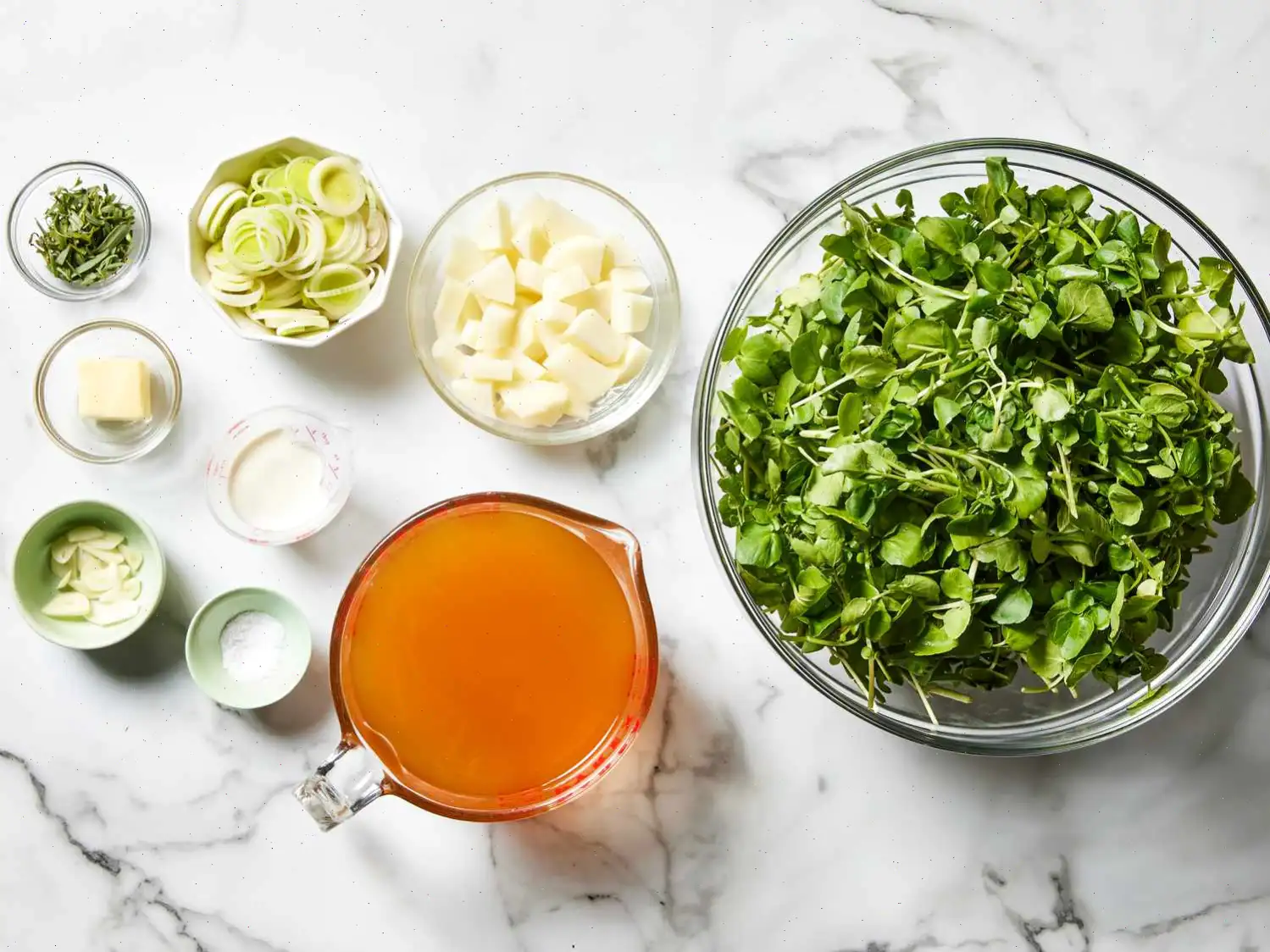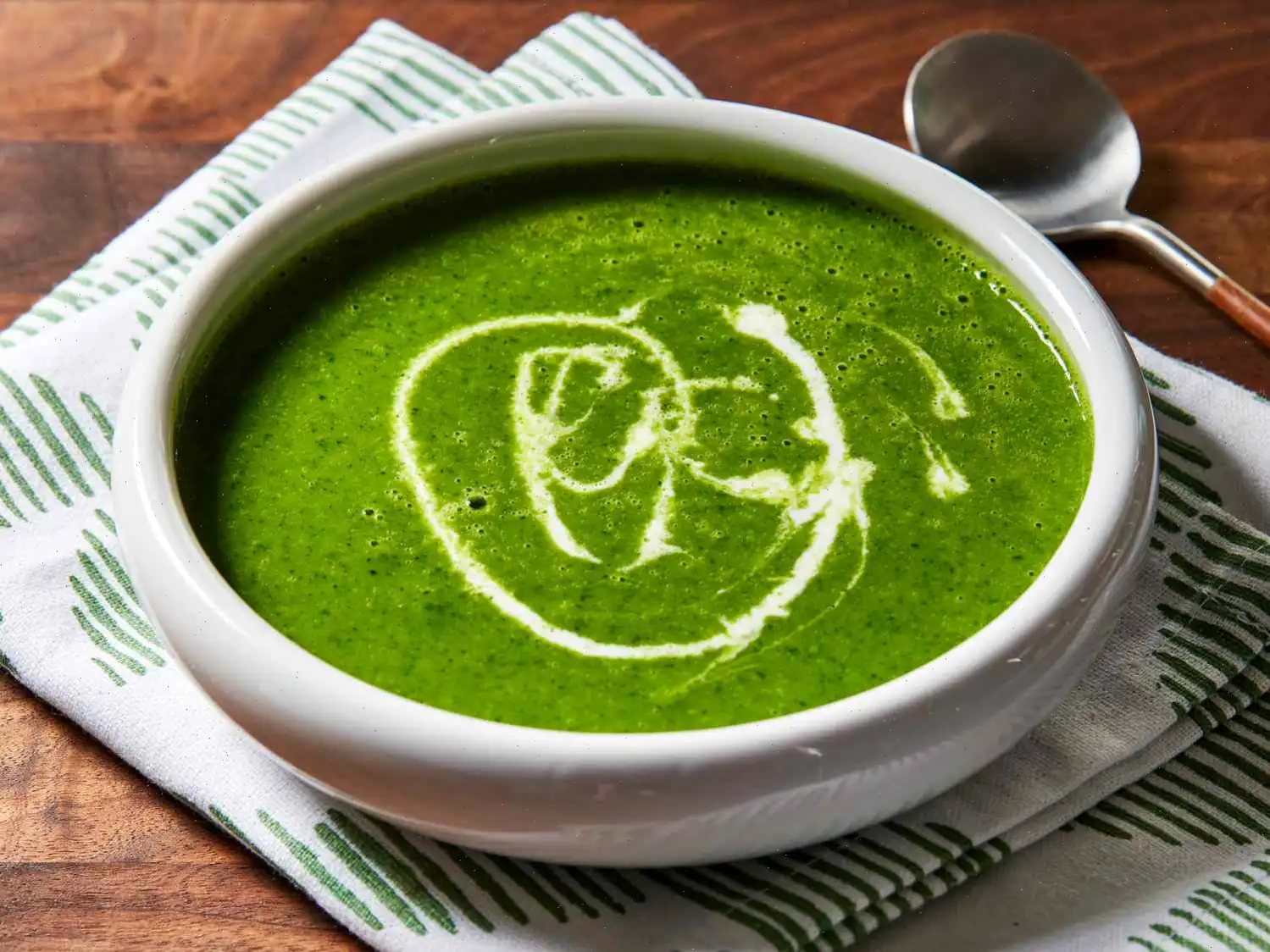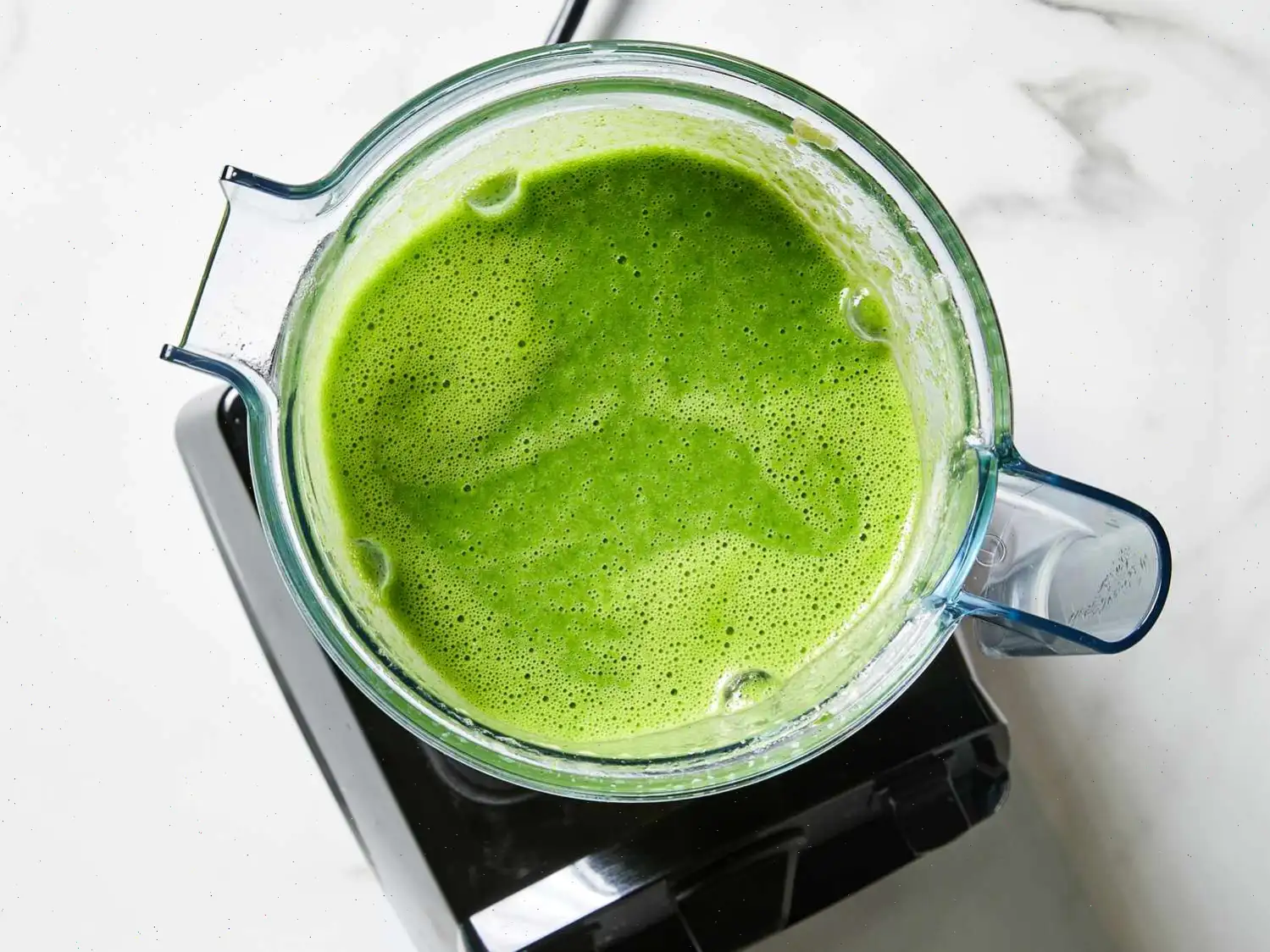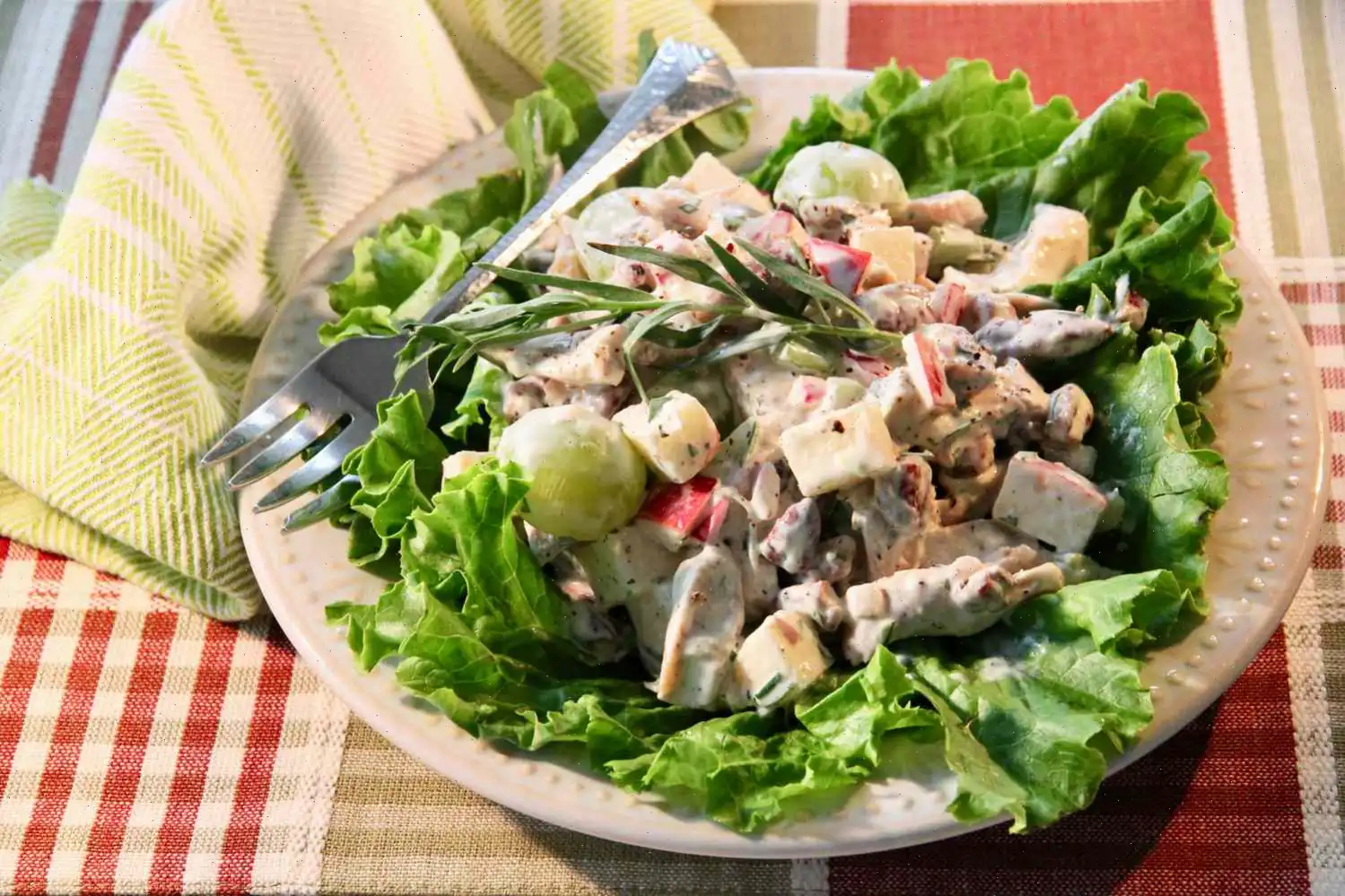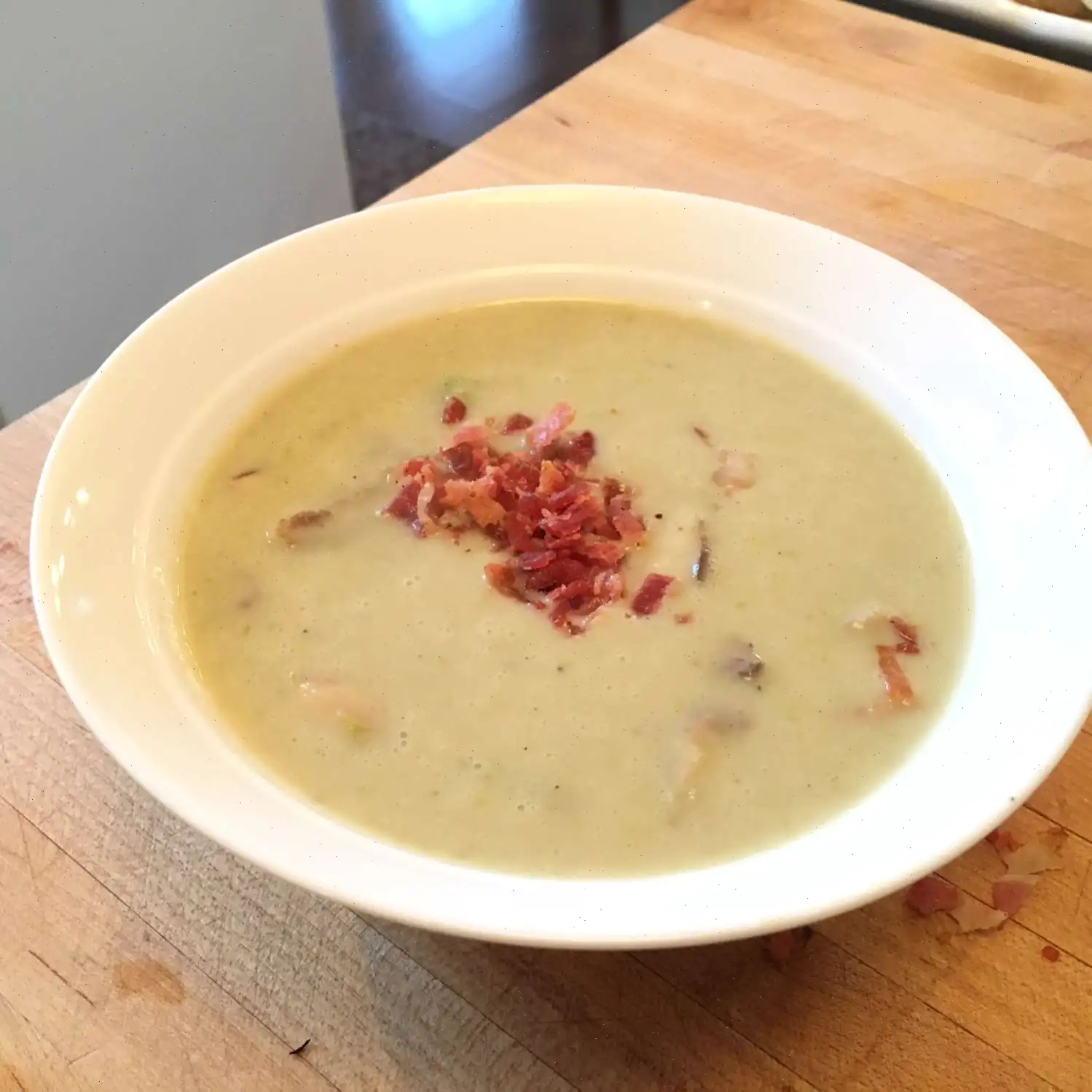
Watercress Soup Recipe
Ingredients
- 2 tablespoons unsalted butter
- 1 leek, sliced
- 2 cloves garlic, thinly sliced
- 4 cups vegetable stock
- 1 russet potato, peeled and chopped
- 1/2 teaspoon kosher salt
- 12 ounces watercress with stems (about 10 cups)
- 1 tablespoon chopped fresh tarragon, plus more for garnish
- 2 tablespoons heavy whipping cream, plus more for drizzling
Directions
- Gather all ingredients.
- In a large saucepan, melt butter over medium-high heat. Add leek and garlic, cooking and stirring often until softened, about 4 minutes.
- Add vegetable stock, potato, and kosher salt to the pan. Bring the mixture to a simmer over medium-high heat and cook undisturbed until the potatoes are tender, approximately 7 minutes.
- Stir in the watercress and cook for an additional 2 minutes, or until wilted.
- Remove the saucepan from heat, then stir in the tarragon.
- Carefully pour the watercress mixture and cream into a blender. Secure the blender lid, removing the center piece to allow steam to escape. Place a clean towel over the opening for safety.
- Blend until smooth, about 20 seconds.
- Evenly divide the soup among 6 bowls. Drizzle with additional cream and garnish with extra tarragon.
Cook's Note
If you prefer, you can use an immersion blender to puree the soup until smooth. This should take about 4 minutes.
Nutrition Facts (per serving)
- Calories: 266
- Total Fat: 4g (6% Daily Value)
- Saturated Fat: 2g (12% Daily Value)
- Cholesterol: 11mg (4% Daily Value)
- Sodium: 196mg (9% Daily Value)
- Total Carbohydrates: 50g (18% Daily Value)
- Dietary Fiber: 9g (34% Daily Value)
- Total Sugars: 6g
- Protein: 9g (18% Daily Value)
- Vitamin C: 42mg (46% Daily Value)
- Calcium: 140mg (11% Daily Value)
- Iron: 3mg (17% Daily Value)
- Potassium: 1213mg (26% Daily Value)
* Percent Daily Values are based on a 2,000 calorie diet. Your daily values may vary depending on your calorie needs.
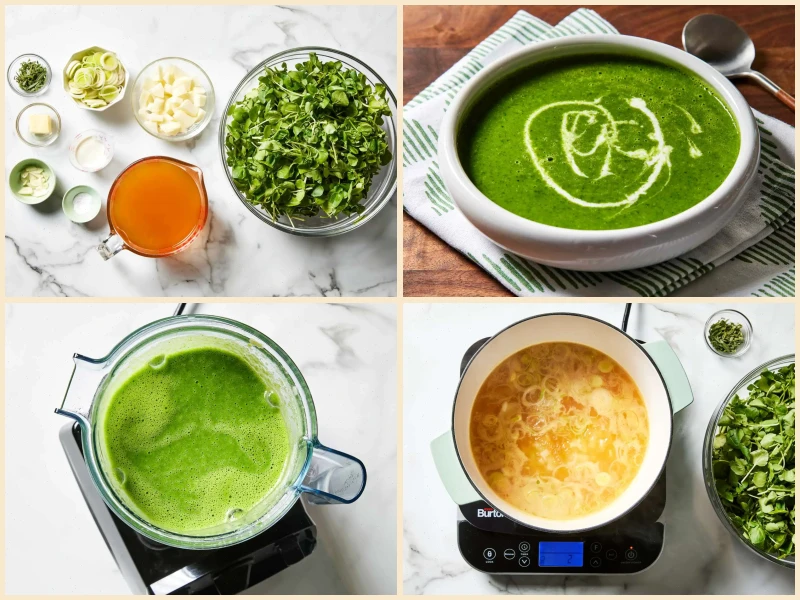
Watercress soup is a fresh, flavorful dish typically made with young, tender watercress leaves, potatoes, and a creamy broth. It is a simple yet delicious way to enjoy this nutritious leafy green. The soup is a perfect choice for springtime meals, offering a light yet satisfying experience. But what is the story behind this comforting soup, and what makes it so unique? Lets take a closer look.
History of Watercress Soup
Watercress has been cultivated and enjoyed since ancient times, with records of its use dating back to the Roman Empire. The vegetable is native to Europe and Asia, and it was prized by early civilizations for both its medicinal properties and culinary uses. In fact, watercress was considered a symbol of vitality due to its high vitamin content, particularly vitamin C.
Watercress soup became popular in Europe during the 18th and 19th centuries, particularly in England, where it was often served as part of a light lunch or evening meal. The English aristocracy was known to enjoy the soup, sometimes served with a dollop of cream or garnished with herbs like tarragon, which is still a common practice today.
Regional Variations
While the basic concept of watercress soup is quite universal, there are regional differences in how it is prepared. In the UK, watercress soup is traditionally made with a base of vegetable stock or chicken broth, and sometimes a small amount of milk or cream is added to enrich the texture. Some British versions might also include additional vegetables, like leeks or onions, to enhance the flavor profile.
In other parts of the world, such as parts of the Mediterranean, watercress is combined with olive oil, garlic, and lemon to create a more tangy and refreshing variation. The addition of fresh herbs like basil or parsley also varies based on the region.
What Makes Watercress Soup Different?
What sets watercress soup apart from other green vegetable soups is the unique flavor profile of watercress itself. Unlike milder greens like spinach or lettuce, watercress has a slightly peppery taste that adds a vibrant, almost mustard-like kick to the soup. It is also packed with nutrients, making it a healthier option compared to many other vegetable-based soups.
Another key difference is the use of potatoes to thicken the soup. The starch from the potatoes gives the soup a creamy texture without needing excessive amounts of cream or butter. This is particularly useful for those who prefer a lighter, more nutritious version of this dish.
Where is Watercress Soup Typically Served?
Watercress soup is commonly served as a starter or light lunch, especially in the spring when watercress is in season. In the UK and other European countries, it may be offered as part of a traditional afternoon tea or as a refreshing first course in a larger meal.
In more casual settings, this soup might be paired with crusty bread or served with a side of salad. In restaurants, watercress soup is often presented as a sophisticated yet simple dish, sometimes garnished with a swirl of cream or fresh herbs like tarragon.
Interesting Facts About Watercress Soup
- Watercress is one of the oldest known leafy vegetables cultivated by humans. It has been a staple food for centuries.
- Rich in antioxidants, vitamins A and C, and calcium, watercress is often touted as a "superfood" due to its health benefits.
- Watercress was once considered a remedy for ailments such as scurvy due to its high vitamin C content.
- In ancient times, watercress was used to treat conditions like digestive issues, arthritis, and respiratory problems.
- During World War II, watercress was promoted in the UK as a cheap and nutritious food, often grown in home gardens or on farms.
Watercress soup continues to be a popular dish for its refreshing taste, health benefits, and versatility. Whether you enjoy it with a creamy base or prefer a lighter version, this soup is an excellent way to celebrate the vibrant flavors of spring.


